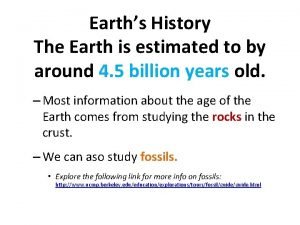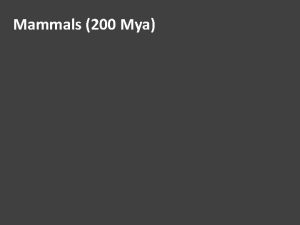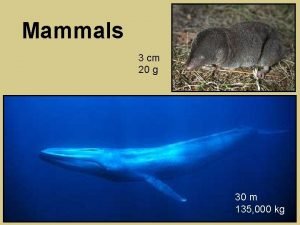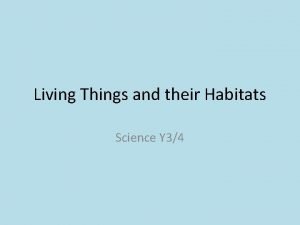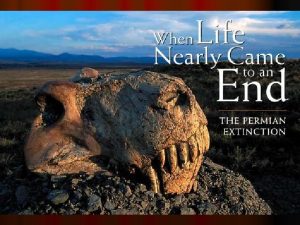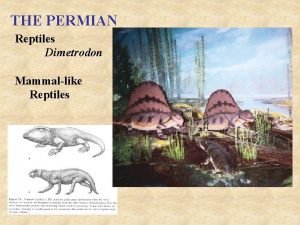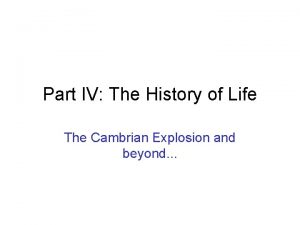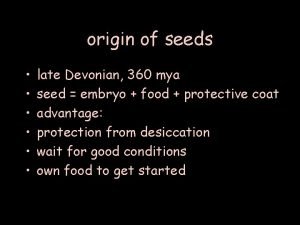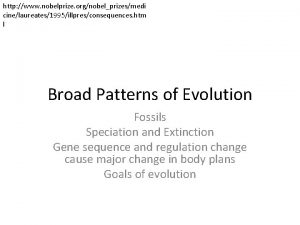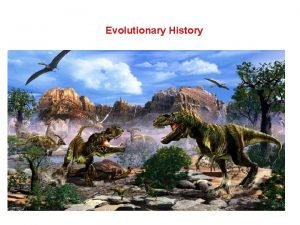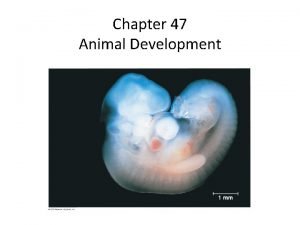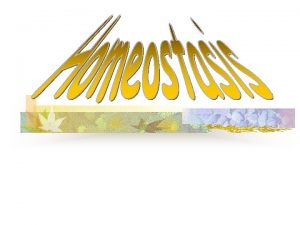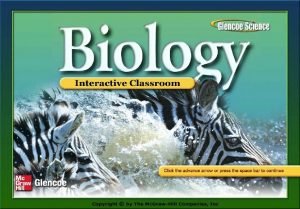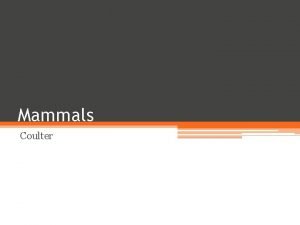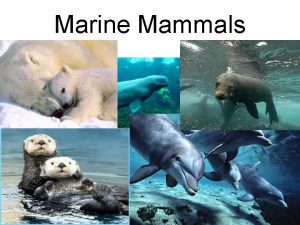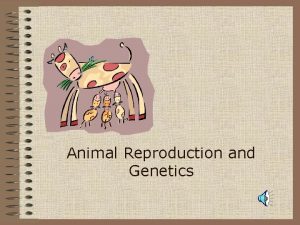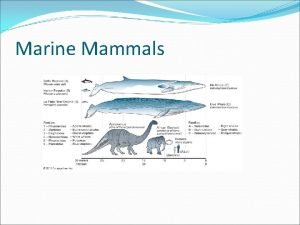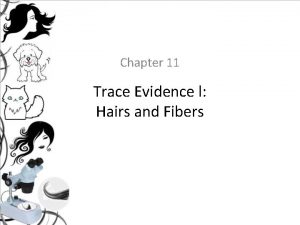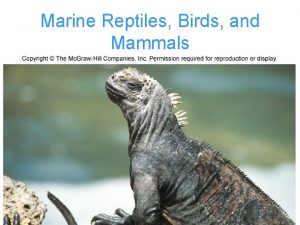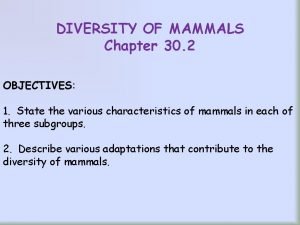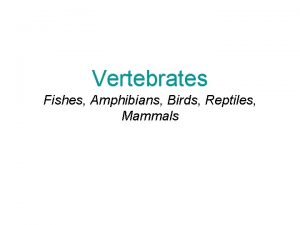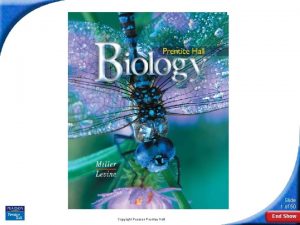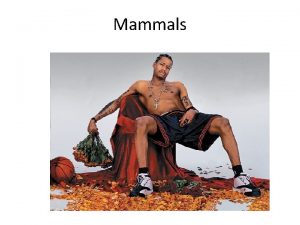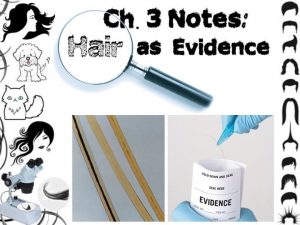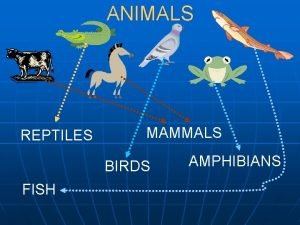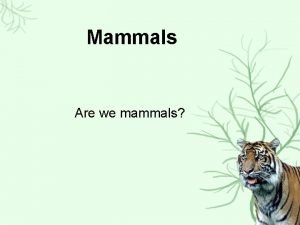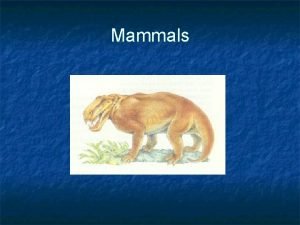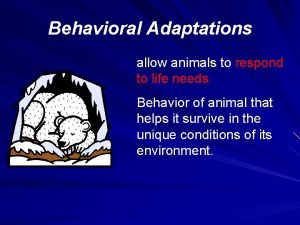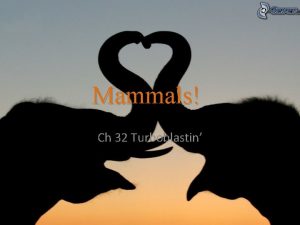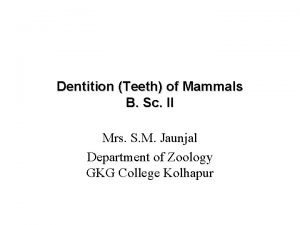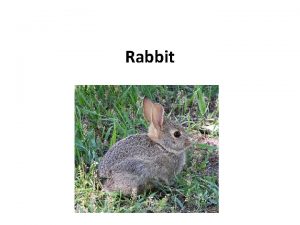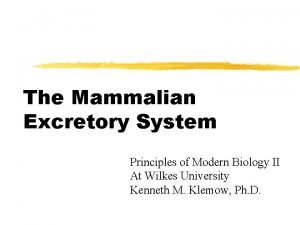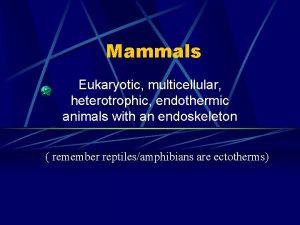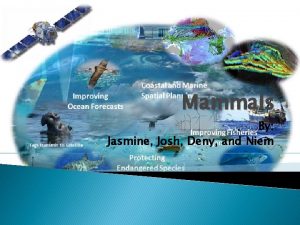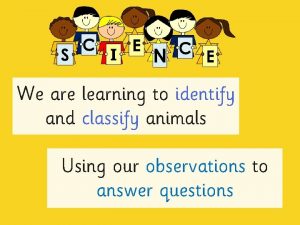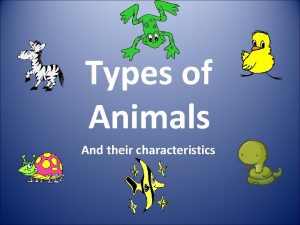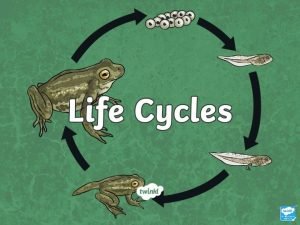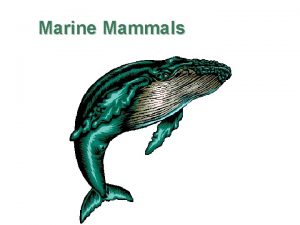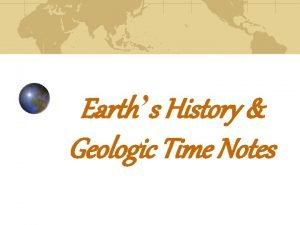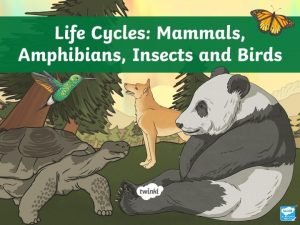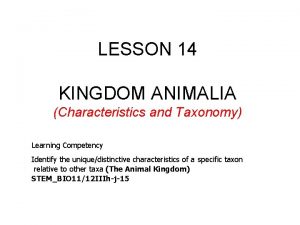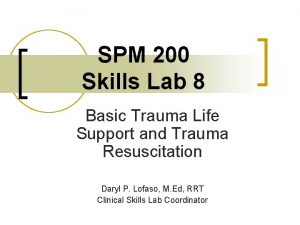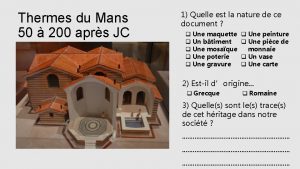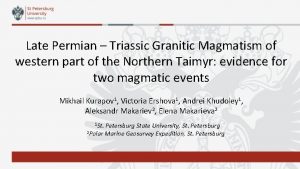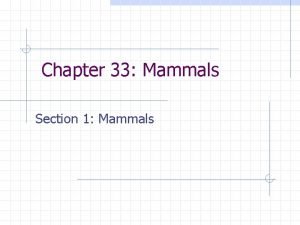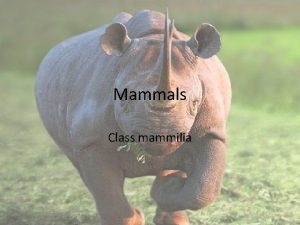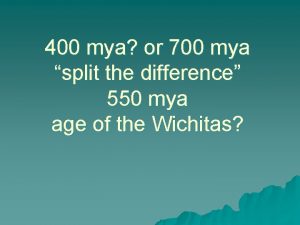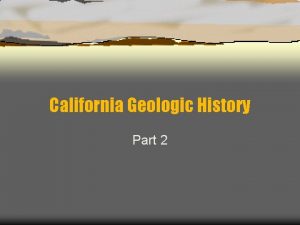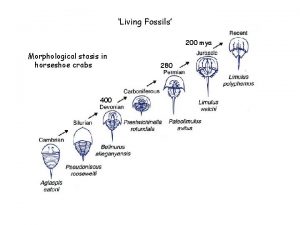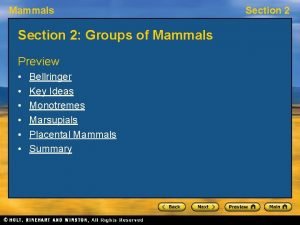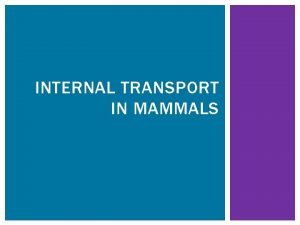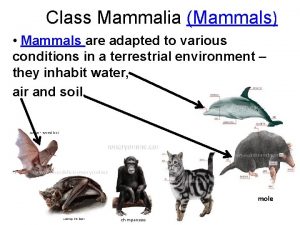Mammals 200 Mya Mammals 200 Mya Permian Triassic




































































- Slides: 68

Mammals (200 Mya)

Mammals (200 Mya): Permian Triassic.

Mammals (200 Mya)Triasic - Cretaceous:


Euryapsids


Synapsids

Pelycosaur

Lystrosaurus (250 Mya)

Cynogathus (240 Mya)









Early Jurassic mammals: Morganucodon and Kuehneotherium.

Hadrocodium: Early mammaliaformes. (195 million years ago) Science 2001 vol 292 p 1535.

Jeholodens jenkinsi (150 million years ago)

Jeholodens: early mammaliformes (165 million years old) Nature 1999, 398, p 326.


Time-calibrated phylogeny of the eutherian Juramaia among other boreosphenidan mammals, and comparative morphology of some key molar features. Z-X Luo et al. Nature 476, 442 -445 (2011)

Juramaia sinensis: Eutheria or placentals 160 Mya. Science 2 September 2011, 333 p 1205

Juramaia sinensis Eutheria, 160 Mya Holotype specimen of Juramaia sinensis, Beijing Museum of Natural History (BMNH) PM 1343 B. Z-X Luo et al. Nature 476, 442 -445 (25 August 2011)

Eomaia: common ancestor of the Eutheria or placentals. (About 128 million years old) Nature 2002, 416 p 816.

Eomaia: common ancestor of the Eutheria or placentals. (About 128 million years old) Nature 2002, 416 p 816.

Eomaia: common ancestor of the Eutheria or placentals. (About 128 million years old) Nature 2002, 416 p 816.

Cronopio dentiacutus. Argentina. Theria, 100 Mya.

Cronopio dentiacutus MPCA 454 type skull and MPCA 453 right lower jaw. GW Rougier et al. Nature 479, 98 -102 (3 November 2011)

Castorocauda Lutrasimilis(165 Mya) (Science February, 2006) Large (800 g) member of the Mammaliaformes or Proto-mammals


Repenomamus robustus (130 Mya), Theria hunting small dinosaurs.

Baby dinosaur

Repenomamus robustus (130 Mya) and dinosaur young in stomach

Repnomamus gigantus (130 Mya)


Mammals in the Cenozoic.



Indricothere: Paraceratherium (Oligocene, 35 – 25 MYA)

Artist's impression of Eurotamandua, an Eocene (55 – 35 Mya) mammal similar to modern anteaters and pangolins, with its young and licking termites from a mound.

Chriacus was a small arctocyonid from the Paleocene (65 – 55 Mya), and has been found at sites in New Mexico and across the western United States. Chriacus is somewhat similar in size and probable lifestyle to coatimundi, who live in the mountains of southwest New Mexico today

Megatherium Giant SLoth


Entelodon (late eocene, 40 Mya)

Archeothera (Oligocene North America, 30 Mya)

Titanothere

Glyptodon (Giant armadillo)

Glyptodon (Giant armadillo)

History of the Birds.

Dinosaurs: Saurischians: theropods: birds. (150 Mya).



Haplocheirus sollers Dinosaur with bird features. (Western China, late Jurassic (160 Mya) Science 29 January 2010, 327 p 571

Sinosauropterix sp.

Archaeopteryx: A transitional fossil between reptiles & birds

Microraptor gui (120 Mya)

Anchiornis Huxleyi (160 Mya)

Anchiornis Huxleyi (160 Mya)

C. yangi's tailbis the longest of any flying dinosaur. American Association for the Advancement of Science 2014; 345: 244 -246 Published by AAAS



Giant terror birds of the Eocene

Terror birds of the cenozoic.


 Cretaceous jurassic triassic
Cretaceous jurassic triassic 200 mya
200 mya Pelycosaurs
Pelycosaurs Animals without backbone
Animals without backbone 200+200+300
200+200+300 Permian extinction
Permian extinction Permian extinction
Permian extinction Transgression
Transgression Permian basin pipeliners association
Permian basin pipeliners association Permian extinction
Permian extinction Www legalandgeneral mya
Www legalandgeneral mya Giant sequoia
Giant sequoia Velaciraptor
Velaciraptor 175 mya
175 mya Mya eve murphy
Mya eve murphy Spriggna
Spriggna Catal huyuk time period
Catal huyuk time period 200 + 200 + 300
200 + 200 + 300 200+200+100+100
200+200+100+100 200+200+300+300
200+200+300+300 200+400+600+800
200+400+600+800 200+200+300+300
200+200+300+300 300+300+200+200
300+300+200+200 Are birds mammals
Are birds mammals Importance of homeostasis in mammals
Importance of homeostasis in mammals Class mammalia characteristics
Class mammalia characteristics Mammal characteristics
Mammal characteristics What us a mammal
What us a mammal Basic animal reproduction vocabulary
Basic animal reproduction vocabulary Characteristics of marine mammals
Characteristics of marine mammals All mammals have hair. its main purpose is to
All mammals have hair. its main purpose is to What are some special characteristics
What are some special characteristics Chapter 30 section 2 diversity of mammals
Chapter 30 section 2 diversity of mammals Cheetah cladogram
Cheetah cladogram 32-1 introduction to mammals
32-1 introduction to mammals Synapsids
Synapsids Pigment granules in hair
Pigment granules in hair Amphibians reptiles mammals birds fish
Amphibians reptiles mammals birds fish We are mammals
We are mammals What are the characteristics of mammals
What are the characteristics of mammals Characteristics of mammals
Characteristics of mammals Characteristics of mammals
Characteristics of mammals Some bacteria benefit mammals by helping with
Some bacteria benefit mammals by helping with Chipmunk behavioral adaptations
Chipmunk behavioral adaptations Monetremes
Monetremes Types of mammalian teeth
Types of mammalian teeth Rabbit are small mammals in the family
Rabbit are small mammals in the family The picture of soldiers ____ back many memories
The picture of soldiers ____ back many memories Endangered animal poster project
Endangered animal poster project Excretory organs in mammals
Excretory organs in mammals Characteristics of a whale
Characteristics of a whale The eutherian mammals for plantigale is patagonian cavy
The eutherian mammals for plantigale is patagonian cavy Characteristics of mammals
Characteristics of mammals Mammals
Mammals Mammals
Mammals Marsupils
Marsupils Similarities between mammals and amphibians
Similarities between mammals and amphibians Parthenogenesis
Parthenogenesis Echolcation
Echolcation Ocean currents project
Ocean currents project Alimentary canal of mammals
Alimentary canal of mammals Text derek
Text derek 32-1 introduction to mammals answer key
32-1 introduction to mammals answer key Mammal life cycle
Mammal life cycle Characteristics of animalia kingdom
Characteristics of animalia kingdom Sitraffic scala
Sitraffic scala Spm 200
Spm 200 Thermes du mans 50 à 200 après jc
Thermes du mans 50 à 200 après jc Cash handling certification
Cash handling certification
